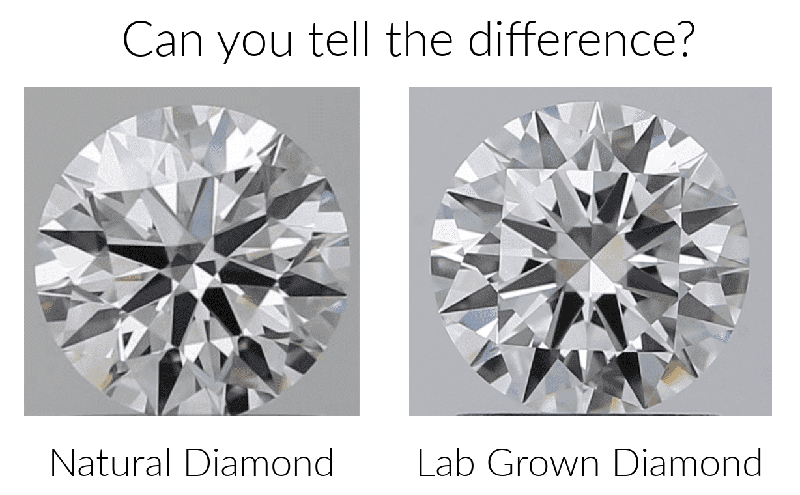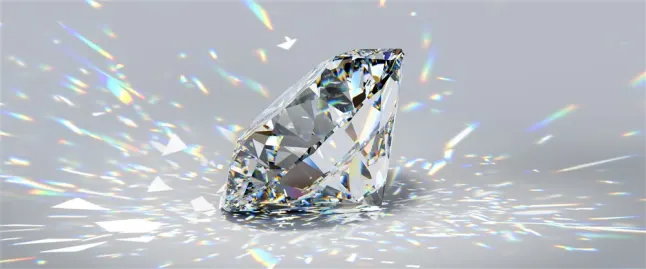Lab Grown Diamonds: HPHT vs. CVD Diamonds
If you are googling HPHT vs. CVD diamonds, then you are clearly moving into the advanced research portion of your lab grown diamond hunt! This is like asking the question, steamed wontons vs. fried wontons - both ways end in cooking the wontons, with essentially the same ingredients, they just do it differently. Okay I mean it might not be exactly the same… so I’ll cover what a lab grown diamond is, how it compares to a natural diamond, and then I will explain the differences between the HPHT and CVD diamond making processes. This is the all informative lab grown diamond article you have been waiting for!
What is a lab grown diamond?
Diamonds are not only one of the most coveted gemstones in the world (thank you marketing), but the diamond industry itself is a multi-billion dollar industry; including both the industrial sector (which lab grown diamonds were originally created for) and the higher quality ¬ gem world. And honestly, since diamonds are just pure carbon, it makes sense that some smart people would want in on the action.

Lab grown diamonds, like our HPHT and CVD, are real diamonds; they have the same chemical and physical composition as natural diamonds do. The difference is that they were grown by people in a lab instead of forming naturally, over millions of years, deep within the earth. That makes lab grown different than diamond simulants, which is where something only looks like a diamond; like a piece of colorless quartz or synthetic moissanite. These are intended to appear like a real diamond but will scratch easier and won’t sparkle the same as the natural stone. This is a huge benefit of a lab diamond - it will still have the same hardness level and brilliance as a natural diamond.
HPHT
A natural diamond needs extremely high pressure and extremely high temperatures (and a lot of time) to grow into a diamond. The HPHT process (high pressure high temperature) closely mimics the conditions that diamonds need to form, but they do it way quicker. This method is more expensive so it's typically reserved for melee (small diamonds under .10ct.).
Process
The HPHT process uses a diamond press that is able to generate an enormous amount of pressure on a tiny central container. Within this container is a seed crystal, carbon atoms, and metallic flux (which is a growth agent). The heat and high pressure cause the carbon atoms to move through the metallic flux towards the seed crystal where the carbon begins crystallizing. The crystal will continue to grow over time, eventually creating a full diamond.
I would like to take a minute to also recognize HPHT as a treatment for diamond color, for both lab grown and natural diamonds. Sometimes the crystal structure of a diamond can be off, which causes a brownish tint to the stone. The high heat and pressure treatment might help reduce or remove these distortions in the crystal structure by realigning it, which can permanently lighten or eliminate the brown color. This will create a brighter, more brilliant diamond.
This is a stable process for both natural and lab grown diamonds. While it does affect the value and price of a natural diamond, with some even calling it not natural anymore, it's a very common practice for CVD lab grown diamonds (about 75% of all CVD diamonds are treated for color) and does not negatively affect the quality or price of the stone. It's just an added step in the growing process.
CVD Diamonds
The CVD process Is becoming more common than the HPHT process because it's more cost-effective and the machinery is a lot smaller. And, fun fact, this process was already being used for other random industrial applications before some clever people decided to figure out how to apply it to diamond manufacturing.
Process
CVD stands for chemical vapor deposition, and this is exactly how these diamonds are grown; carbon rains down from a plasma cloud and deposits onto an HPHT grown diamond seed crystal, and as this carbon deposit builds - synthetic diamonds form. Since CVD diamonds grow in thin layers, the amount of time allowed for growth will dictate how large the diamonds will be. No high heat or high temperatures (like in other diamond growing) needed!
There are certain boring things, like internal growth patterns or specific inclusions (and of course the price), that will be different between a natural diamond and a lab grown HPHT or CVD diamond. But both types of diamond are made of pure carbon, both have the extreme hardness that is so important, and both are used in the industrial world and as gem quality stones in jewelry. At the end of the day, no matter which process was used to grow your diamond, it's still going to be gorgeous and full of sparkly shine!

